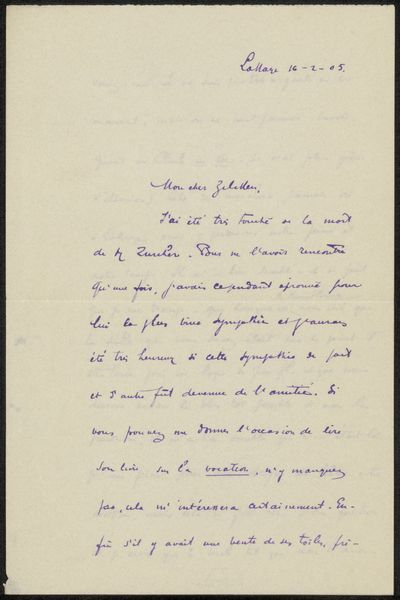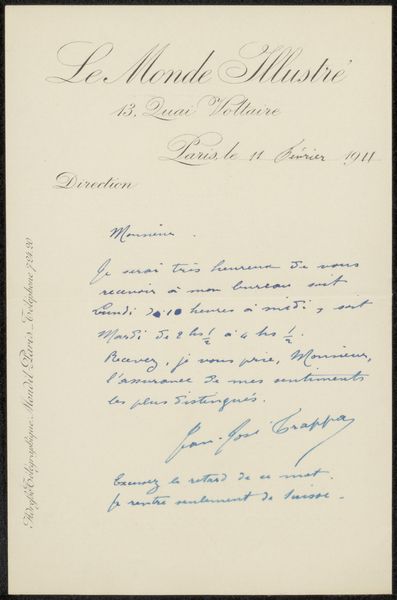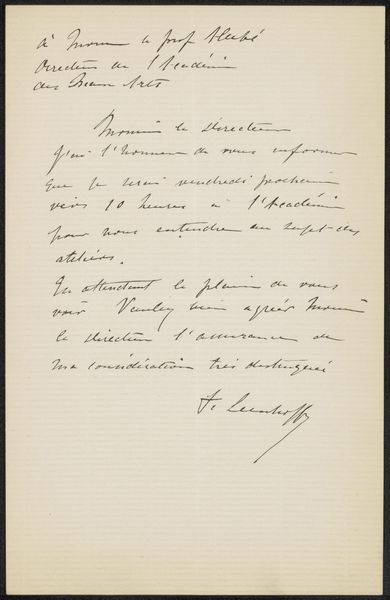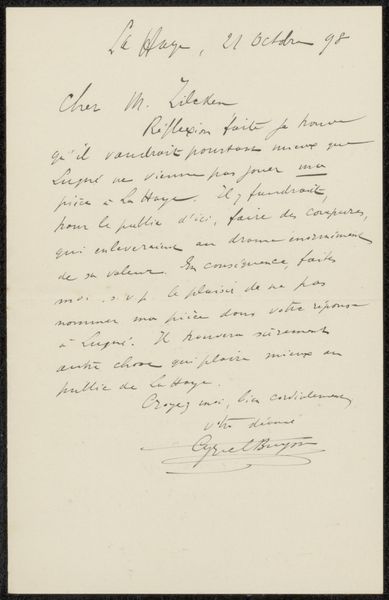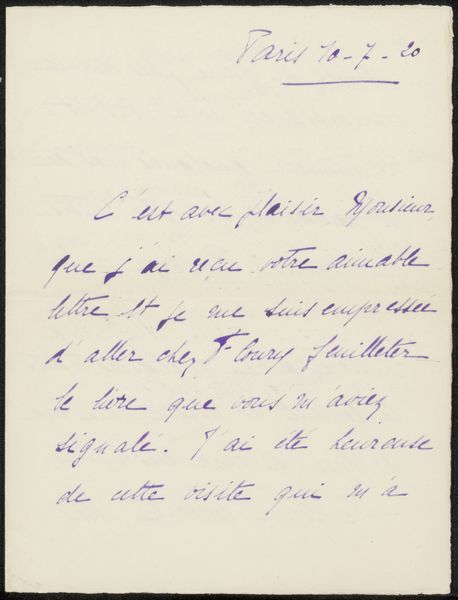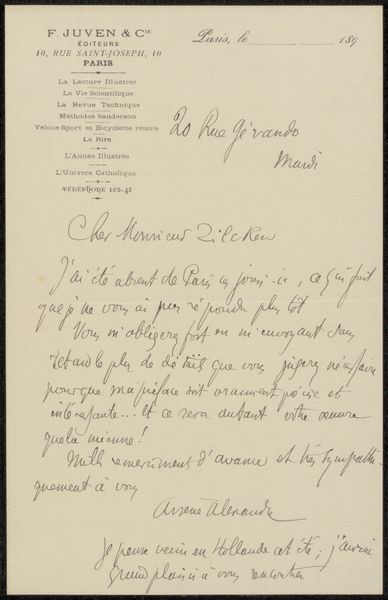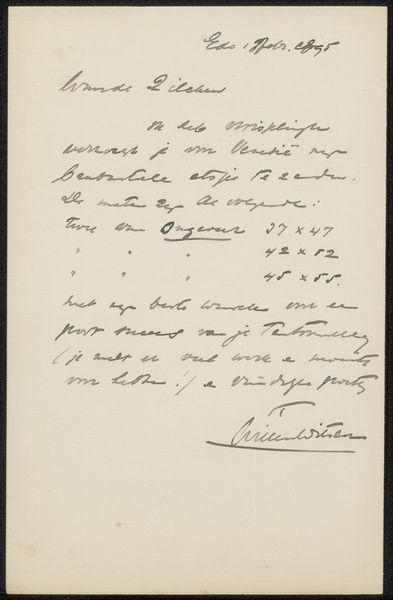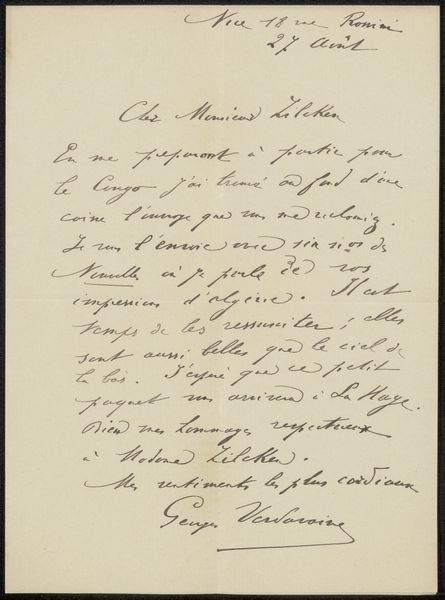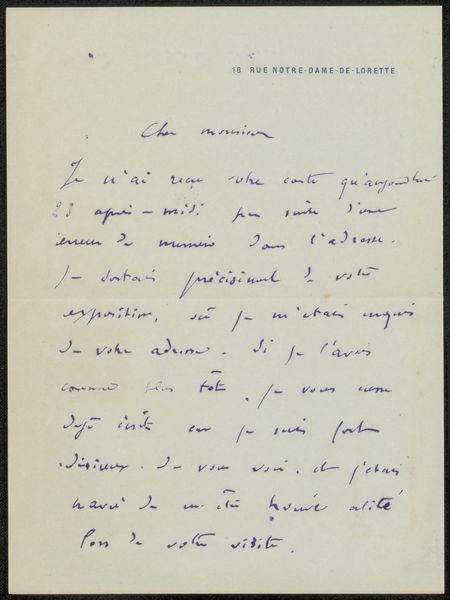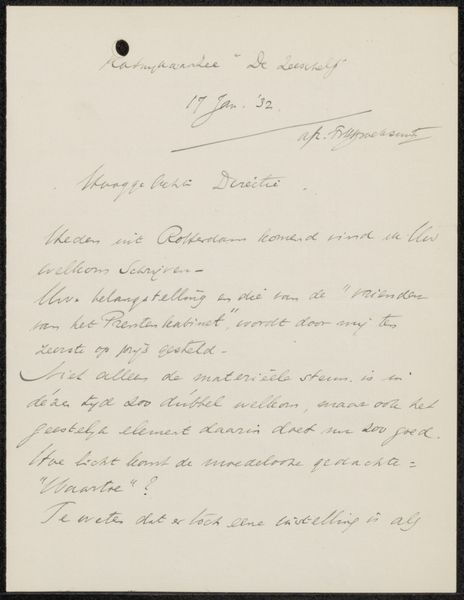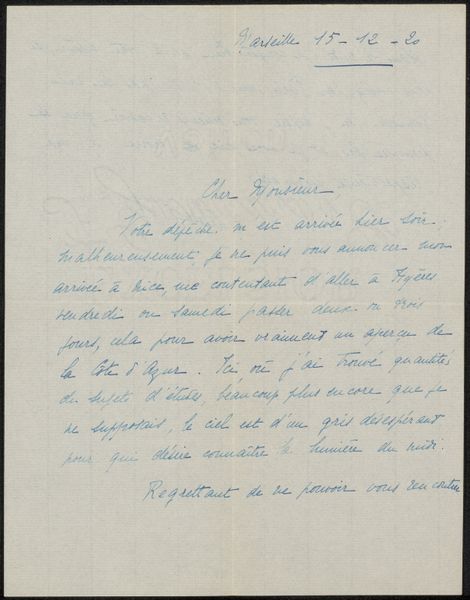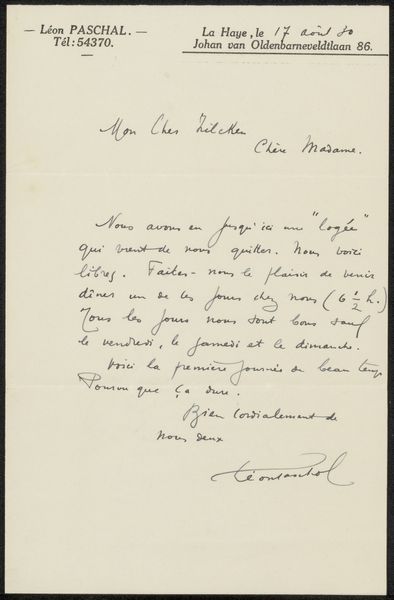
drawing, paper, ink, pen
#
drawing
#
ink paper printed
#
pen sketch
#
hand drawn type
#
paper
#
personal sketchbook
#
ink
#
ink drawing experimentation
#
pen-ink sketch
#
ink colored
#
pen work
#
sketchbook drawing
#
pen
#
sketchbook art
#
calligraphy
Copyright: Rijks Museum: Open Domain
Curator: This is a letter, titled "Brief aan Philip Zilcken," penned before 1922 by Marcel Batilliat. The artwork is rendered in pen and ink on paper. It looks like a quick note or a draft, perhaps? Editor: There's a casualness about it, yes, but also an elegance. It feels very personal, like catching a glimpse into a private correspondence. The blue ink is quite striking. Curator: The use of handwriting itself carries so much symbolic weight here. Before mass printing, handwriting connected the writer directly to the receiver. Every curve and flourish of the pen carries a piece of the person's identity. Do you sense that at all here? Editor: Absolutely. The calligraphic style hints at a cultivated aesthetic. And the act of writing a letter in itself represents intentionality, even care and attention. Someone has clearly invested time in this message. How does this kind of personal letter fit into the larger narrative about the artist's practice? Curator: Precisely! Think about this letter as a fragment of Batilliat's daily existence. We tend to focus on paintings or sculptures in museums. It's an intimate medium for an artist known more broadly for design, prints, and bookplates. Perhaps it reflects social codes about how to correspond. Editor: Letters also often provide access to hidden histories, revealing networks and relationships that might otherwise be lost. To whom was it written, and what context surrounded the moment of this correspondence? Are there unspoken social scripts at work in the wording? Curator: Philip Zilcken, in this instance. I imagine for an artist immersed in a world of aesthetics, the beauty of a well-formed letter could serve as another dimension of creative practice. This might not only represent friendship but professional alliances that furthered cultural life at the turn of the century. Editor: I see that reflected, actually, in how meticulously Batilliat's letter must adhere to period epistolary protocol, from the greeting, "Mon cher Ami", to its closing salutation. "De Ton ami, Zilcken". A social performance—a trace. I would not assume, then, this letter expresses merely casual intentions, because etiquette itself may here conceal a coded motive. Curator: Fascinating! A brief sketch made in ink reveals dimensions that we barely touch. Editor: Yes, seeing the handwriting provides so many details unavailable in his prints. This brief correspondence illustrates the nuances within historical record itself.
Comments
No comments
Be the first to comment and join the conversation on the ultimate creative platform.
